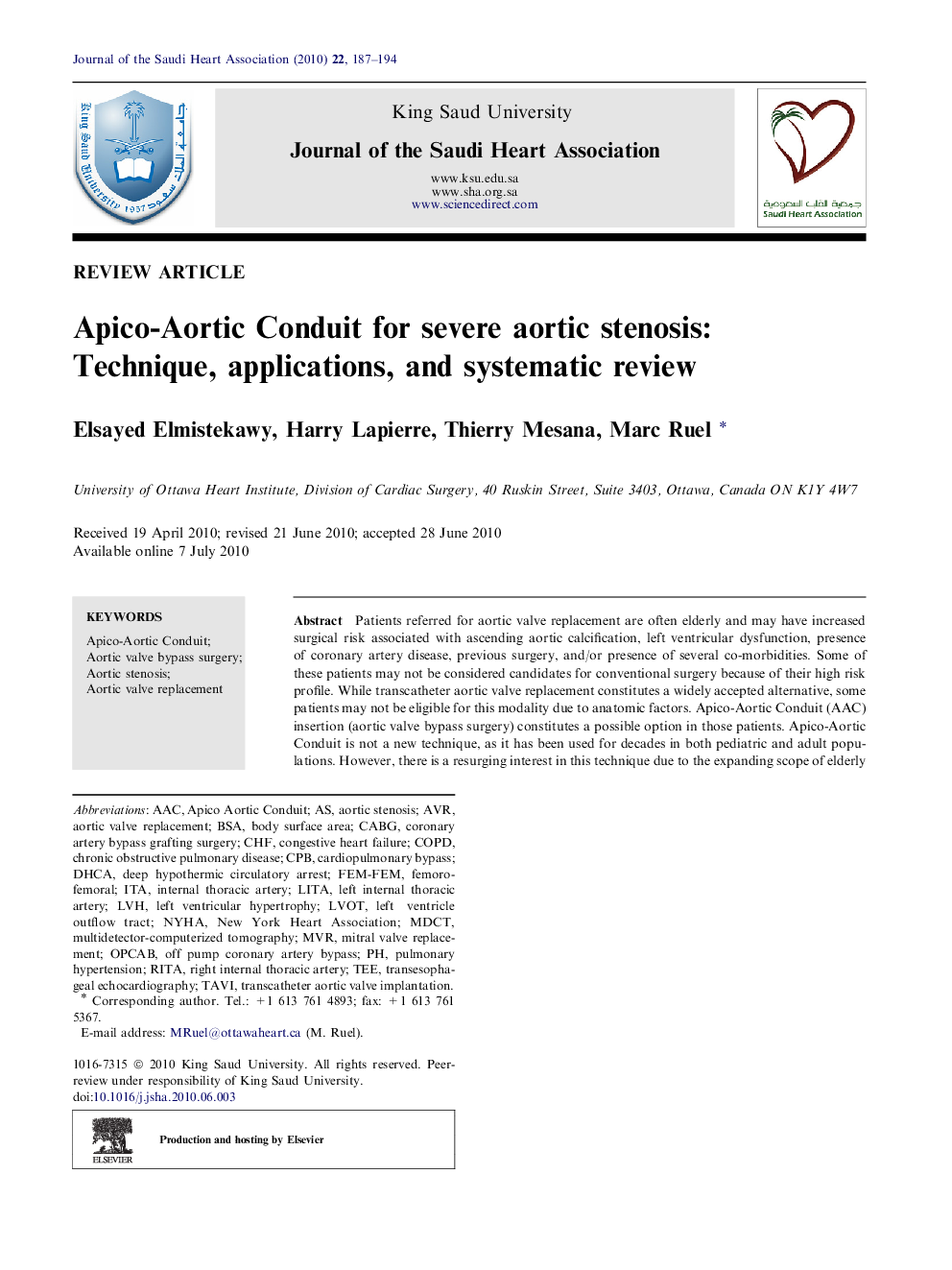| Article ID | Journal | Published Year | Pages | File Type |
|---|---|---|---|---|
| 2978140 | Journal of the Saudi Heart Association | 2010 | 8 Pages |
Patients referred for aortic valve replacement are often elderly and may have increased surgical risk associated with ascending aortic calcification, left ventricular dysfunction, presence of coronary artery disease, previous surgery, and/or presence of several co-morbidities. Some of these patients may not be considered candidates for conventional surgery because of their high risk profile. While transcatheter aortic valve replacement constitutes a widely accepted alternative, some patients may not be eligible for this modality due to anatomic factors. Apico-Aortic Conduit (AAC) insertion (aortic valve bypass surgery) constitutes a possible option in those patients. Apico-Aortic Conduit is not a new technique, as it has been used for decades in both pediatric and adult populations. However, there is a resurging interest in this technique due to the expanding scope of elderly patients being considered for the treatment of aortic stenosis. Herein, we describe our surgical technique and provide a systematic review of recent publications on AAC insertion, reporting that there is continued use and several modifications of this technique, such as performing it through a small thoracotomy without the use of the cardiopulmonary bypass.
